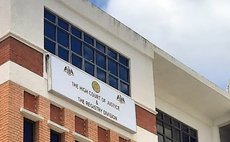Sepsis Sensitization: we need to be proactive to reduce sepsis and save lives

A registered Dominican nurse, who practices in New York, USA, has made it her mission to sensitize the public on sepsis to save more lives.
Marelene Lambert, whose father passed away from that diagnosis not too long ago, holds this project dear to her heart.
"Too many people are dying globally from sepsis," she lamented, "so there is a drive to make people aware of sepsis. Because by the time people get to the hospital with sepsis, it is already too late, and they can die."
For those unaware, sepsis is the body's overwhelming response to an infection. The body's reaction varies widely to include a fever, lethargy, and loss of appetite, to name a few.
Lambert utilizes the acronym TIME to highlight the symptoms of sepsis among individuals better.
"T is for temperature, or what people more commonly call fever, though there may be none at times. The I stands for infection. M is for mentation or mental activity; sometimes, the person may become confused or tired. And the E is for emergency."
This medical practitioner sincerely encourages the Dominican public to look out for these signs and symptoms to help curb the rate of sepsis-related deaths in the country.
Although there are no official statistics on sepsis-related deaths in Dominica, the nurse firmly advises those who notice the TIME indicators to "seek medical attention, the same way you would if it was anything related to a stroke or heart attack. You should seek medical intervention immediately because sepsis progresses into septic shock. Once you reach that stage, it's difficult to come back."
The diagnosis of sepsis can spark fear in anyone or the affected person's family member, and though it is a severe diagnosis, it does not automatically mean a death sentence.
"Sepsis is easy to treat with broad-spectrum antibiotics and IV fluids," Lambert shared. "There should be a blood culture drawing within the first hour of someone going to Accident and Emergency Department - or Casualty as it is called - after which the organism is detected and the best antibiotic is administered."
During her sensitization campaign, Nurse Lambert has been discussing sepsis with a wide range of individuals to spread the word. However, she discovered this was more of an uphill battle than expected.
"I have been speaking with people causally, and some are saying they have heard the word but have not paid attention, while others say they have not heard of sepsis. So, we need to become aware of sepsis. And if the person is diagnosed early, that can boost their chances at survival."
World Sepsis Day is recognized on 13th September. While Nurse Lambert continues her outreach, her ultimate goal is for at least half of the population to have heard about or know how to identify sepsis.
According to the health care provider, "87% of the population worldwide would already have sepsis when they seek medical intervention. Some people get sepsis while in hospital. But out of the hospital, it is 87%, meaning by the time they get to the hospital, if they are not diagnosed and treated promptly, they go into septic shock, which is the last phase of sepsis."
And this, the last phase of sepsis, is something Nurse Lambert frankly believes Dominicans should play their part in helping to reverse.
"The medical establishments also have to get on board with the programme," Lambert emphasized, "because if people go to the Accident and Emergency Department or Casualty and are not screened for sepsis, then it is incumbent on the individual or family to ask about it. So raise the awareness." Sepsis is nothing new, Lambert disclosed; however, due to the growing number of people who have died from sepsis, there is a drive to make people aware and get proactive to treat it like the emergency that it is.




